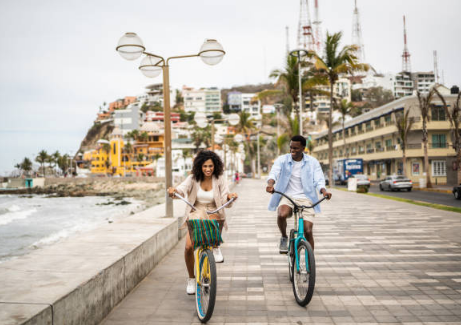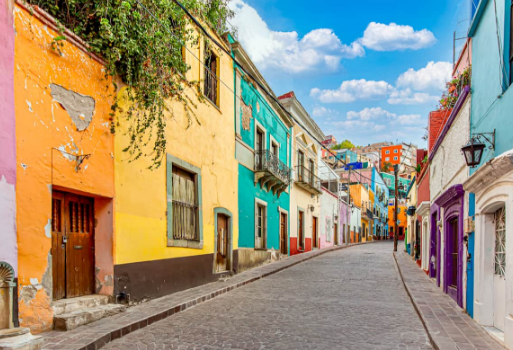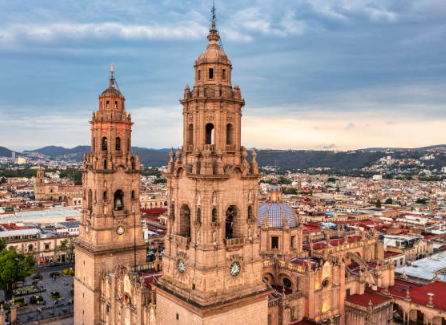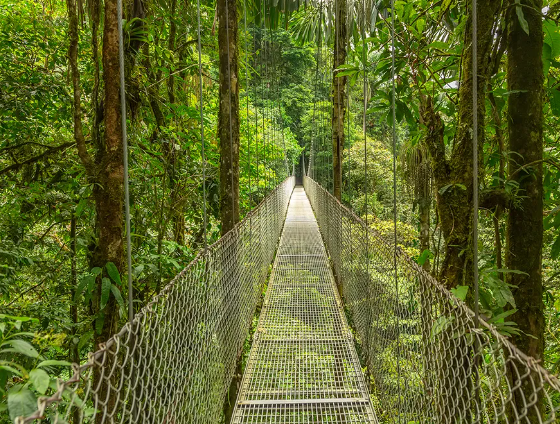
Travel Guide: Maldives
January 13, 2025
10 Lake Placid Summer Vacations to Plan This Summer
January 16, 2025From Mayan ruins to lush jungles to pristine beaches, Mexico is a stunning but often overlooked destination.
Of course, many people visit the coastal holiday hotspots, but the country’s charm goes far beyond all-inclusive resorts.
Admittedly, I was late in exploring Mexico. It wasn’t until recently that I finally stepped out of the infamous tourist meccas of Cancun and Tulum. But when I did, I fell in love.

Mexico City is a world-class destination full of art and culture, and Oaxaca’s thriving mezcal industry (and top-notch culinary scene) makes it one of my favorite places in the world.
Mexico is an amazing country for backpacking, driving tours, or just vacationing. There’s a myriad of things to see and do, and the locals are some of the friendliest people on the planet.
However, the country is constantly labelled as unsafe by the media. Drugs, corruption, cartels – the list goes on.
While Mexico does have its predicament (ranking in the top 20 in terms of homicides per capita), most violent crimes are gang-related. This means that as a regular traveler, you don’t need to worry all day.
However, there are a few things to keep in mind when you visit Mexico. Here’s everything you need to know to stay safe and have fun in Mexico.
Is Mexico Safe for Solo Travelers?
Mexico is safe for solo travelers, but it doesn’t hurt to travel in a group if you’re out at night. Shared taxis are also a good option as it’s always safe to get crowded. But in general, solo travelers don’t need to be on their toes here forever. Just by taking standard precautions (keeping valuables safe, always being aware of your surroundings, etc.), you can avoid most of the common pitfalls in Mexico.
Additionally, learning some Spanish will help you stay safe because you will be able to better integrate and understand what the people around you are saying.
Is Mexico Safe for Solo Female Travelers?
Mexico is safe for solo female travelers, as long as they take the same precautions as elsewhere. This includes keeping an eye on your drinks at the bar and avoiding walking around alone at night (especially after drinking).
Also, consider booking accommodation that is centrally located so you can stay in a well-lit area. Try to avoid wearing flashy jewelry or showing off your electronic devices, as most petty crimes are crimes of chance.
Finally, if this is an issue, ignore those who are nitpicking. They can become aggressive, so it’s best to ignore them if you encounter them.
Are Mexican Taxis Safe?
Generally, taxis in major tourist areas – from Mexico City to Oaxaca to Cancun – are safe and reliable. Just make sure you’re taking a legal, authorized taxi. When in doubt, call your accommodation and book a taxi for you.
Please note that not every city has taxis that use a meter, so if one is not available, be sure to ask for the price in advance.

In general, avoid flagging taxis at will, as they are not always legal. When in doubt, choose Uber (if available) or Didi, which is the local version of Uber. Overall, both are safe to use, but be aware that in some tourist areas (especially Cancun), taxi drivers are actively protesting against Uber, which occasionally leads to arguments with tourists caught in the middle.
If you’re not sure if it’s safe to use Uber in a particular area, just ask your property.
Is it safe to rent a car in Mexico?
Overall, renting a car in Mexico is safe. Be sure to follow the speed limits and road rules, though, as it’s not uncommon for police to stop vehicles for minor violations in the hope of accepting bribes.
Also, it is best to avoid driving at night as carjackings are most likely to occur at night.
While each region is different, the best place to rent a car is the Yucatan Peninsula. The roads are generally well-maintained, and the area is relatively safe to drive and explore off the beaten track.
Is Tap Water Safe in Mexico?
In most places, tap water in Mexico is not safe to drink. Despite improvements in Mexico’s purification and treatment systems, it’s best to avoid tap water and drinks with ice (unless the ice is made from filtered water). In Puerto Vallarta, you can get away with it, but in most other areas, you’ll want to avoid it.
While showering is fine, you may want to avoid brushing your teeth with tap water to be on the safe side.
Since single-use plastics are harmful to the environment, bring a water filter. LifeStraw produces reusable bottles with built-in filters, so you can be sure your water is always clean and safe.
Can I Go Shopping in Mexico at Night?
Most of Mexico’s popular destinations have tourist areas where most of the attractions and restaurants are located. It’s usually safe to explore these places at night, but you’ll want to keep your valuables safe and travel with a group whenever possible. Even in non-touristy areas, you’ll be fine. Mexico has a nocturnal culture, so a lot of people go out at night, which means there’s a lot of staring on the streets. More people = fewer chances of crime.
But be sure to double-check your accommodation upon arrival to see if there are any areas that you shouldn’t be visiting at night (or during the day).
Are There Any Areas in Mexico That I Should Avoid?
Unfortunately, there is. Ciudad Juárez, Zacatecas, Sinaloa, Guerrero, Tamaulipas, and Collima are generally considered the main places to avoid in Mexico. Does that mean they’re open war zones where you’ll be looted or killed when you arrive? Of course not. But in these destinations, safety is a definite issue – even for locals. Here you will find a lot of cartel activities and I don’t recommend visiting these places.
10 Safety Tips for Mexico
1. Get a Mexico SIM card – It’s crucial to have a working phone in case of an emergency. If you’re from the United States, you can use cellphone service for free while in Mexico. If not, consider picking up a Mexico SIM card upon arrival. You’ll get better coverage and be able to access the map when you need it. They are also cheap, costing around $10.

2. Drive only during the daylight – If you rent a car, stick to driving during the day. Carjackings are common, but they usually occur at night. While there are plenty of government checkpoints to help ensure safety, it’s better to be safe than sorry.
3. Learn some Spanish – The more Spanish you know, the easier it will be for you to fit in. Also, if something happens, you’ll be able to ask for help more easily. Learn some practical words and phrases before your trip.
4. Don’t dress flamboyantly – Showing off jewelry, expensive phones, or laptops is sure to be a target for criminals. Try not to wear jewelry unless absolutely necessary, and keep your phone out of reach to get used to the environment.
5. Don’t take drugs – Mexico has a cartel problem, which is exacerbated by recreational drug users. The purchase of drugs directly supports drug cartels and puts Mexican citizens at risk. Don’t take drugs here.
6. Don’t drink water – While most restaurants and cafes use filtered water as a drink, ice cubes are a different story. If you’re unsure, be sure to ask, or stick to drinks without ice. Also avoid brushing your teeth with tap water, although tap water can be used for showering. Before drinking, use a bottle with a filter to purify the water.
7. Trust your instincts – if a food stall or restaurant looks unsanitary, it probably is. On the other hand, if you’re not sure where to eat, opt for the taco stand with the longest queue. If there is a long queue, it may be because the food is great. Locals know the best places to eat, so trust their choices!
8. Watch your money – don’t carry all the pesos in your purse or pocket. Spread the money everywhere (some in your wallet, some in the hotel’s safe, and some in your backpack) so that if someone steals your wallet or robs you, you still have money elsewhere.
9. Be careful when using ATMs – Use ATMs only inside banks. Robbery at outdoor ATMs is more common, and skimmers can be placed on outdoor ATMs (to steal your PIN). For safety reasons, please use only indoor ATMs.
10. Avoid hurricane season – Mexico’s hurricane season typically lasts from June to November. Tropical storms and hurricanes (along the Pacific and Atlantic coasts) can cause flooding, landslides, and other damage. They are especially common around Cancun. If you’re traveling during this time, make sure you have the right travel insurance that covers things like delays, disruptions, and injuries caused by natural disasters.



